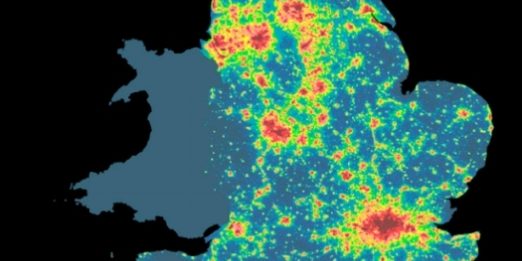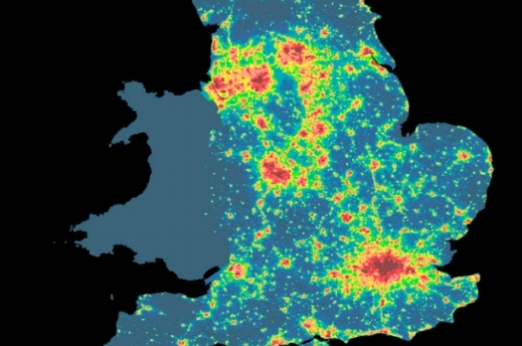New interactive maps from CPRE reveal England’s darkest and most light-polluted skies

13th June 2016

The most detailed ever satellite maps of England’s dark skies are today released by the Campaign to Protect Rural England (CPRE).
The most detailed ever satellite maps of England’s dark skies are today released by the Campaign to Protect Rural England (CPRE). Produced by consultants LUC, they enable users to search by postcode, and provide a more detailed and up-to-date analysis of England’s skies compared with the global atlas of light pollution released this week.
Nationwide, the satellite maps show that just 22% of England is untouched by light pollution, and that 53% of our darkest skies are over National Parks and Areas of Outstanding Natural Beauty (AONB).
With just over half of our darkest skies in National Parks and Areas of Outstanding Natural Beauty, these maps demonstrate the vital role that the three AONBs in Oxfordshire play in protecting and enhancing our experience of the countryside.
Almost one quarter of the land area in Oxfordshire is included in an Area of Outstanding Natural Beauty – the three AONBs in Oxfordshire include the Cotswolds, the North Wessex Downs and the Chilterns.
CPRE recommends that:
* Local authorities develop policies in local plans to control light pollution, which ensure that existing dark skies are protected and that new developments do not increase local light pollution.
* Highways England use the maps to identify sections of motorways and trunk roads that need urgent attention to reduce light pollution. Any new lighting should be well designed and the minimum required to meet its purpose.
* Businesses review their current lighting and future development plans to save money by dimming or switching off light to reduce pollution.
* Primary schools use the lesson plans that CPRE has disseminated to promote the enjoyment of dark skies.
Emma Marrington, senior rural policy campaigner at the Campaign to Protect Rural England (CPRE), said:
“Our view of the stars is obscured by artificial light. Many children in urban areas may not have seen the Milky Way, our own galaxy, due to the veil of light that spreads across their night skies. Councils can reduce light levels through better planning and with investment in the right street lighting that is used only where and when it is needed.”
Find out more:
Read ‘Night Blight‘ by CPRE, June 2016.
CPRE Oxfordshire, 13 June
